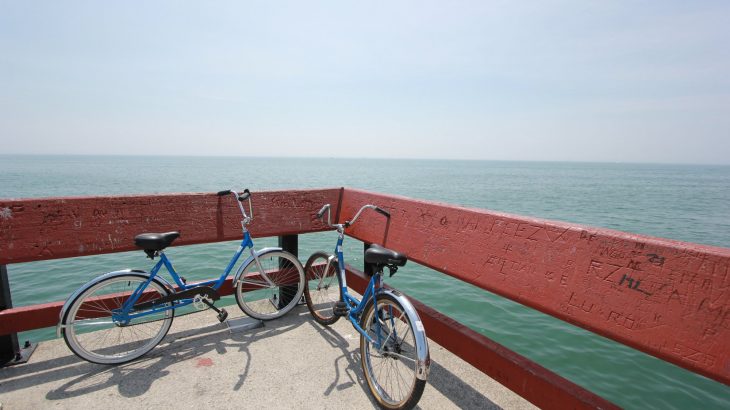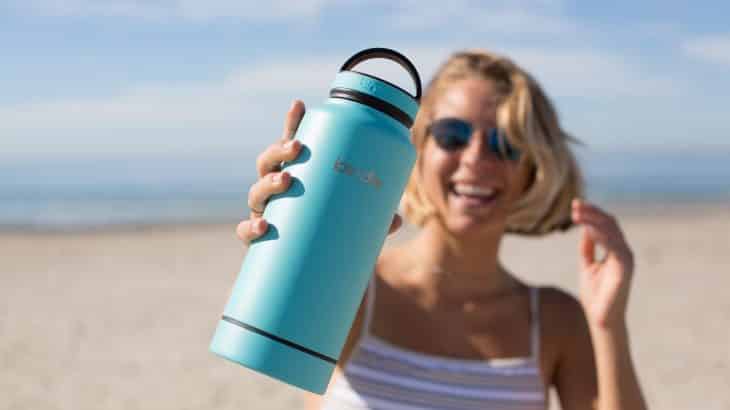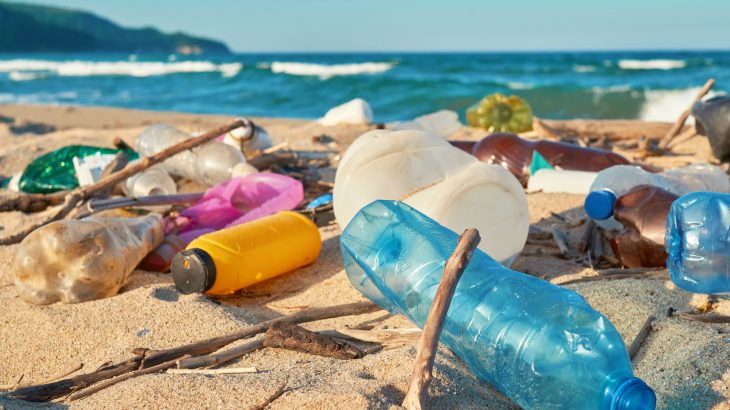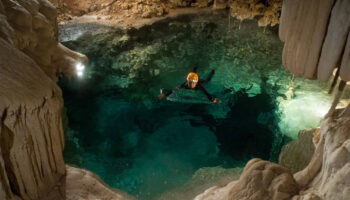World travel is one of the most magnificent things you can experience on planet Earth. Seeing corners of the world completely different from your own amazes and humbles you at the same time, leaving you with a unique perspective you can only get through experience.
Travel the World but Do No Harm✌
Unfortunately, travel and tourism do more harm than good at times, and the last thing you want to do on vacation is worry about harming the destination or leaving a large eco-footprint. With eight-million metric tons of plastic going into the ocean annually, rising C02 emissions and habitat destruction from deforestation and over fishing, we need to be conscious of our consumption in our daily lives—and that includes while traveling. We rounded up a few ways you can greatly reduce your carbon footprint while traveling without compromising on your experiences.
Stay in a Green Hotel
Eco-hotels are built in congruence with the environment—some are actually made from natural materials and “blend in” to the surroundings like the eco-hotels in Tulum, while others make small changes like the option to reuse your linens, solar energy, farm-to-table dining and more. When researching your accommodations, it should be easy to find out whether or not the property values sustainability and the environment, as most green hotels proudly display their green certifications.
Rent Bikes Instead of a Car
What better a time to rent bicycles and enjoy the outdoors than on vacation? It’s unlikely you’ll be able to completely cut out carbon-emitting transportation like planes, trains and cars, but when it comes to the environment and consumption, every little bit counts!
Buy Local Handicrafts as Souvenirs & Take Local Tours
When you visit popular tourist destinations, there are usually two kinds of souvenirs, those locally made and unique to the area, and those mass-produced out of plastic representing the areas landmarks or notable attractions. Skip the cheap souvenir key chains and go for a unique handicraft made by locals. Likewise, take locally-run tours instead of tours with commercial tourism companies—it’s likely you’ll have a better experience anyway!
Bring a Reusable Water Bottle
Everyone who’s flown has seen it before—passengers chugging their drinks or emptying their water bottles at the security checkpoint in the airport. Though it can be frustrating whether you have a reusable water bottle or not, bringing that reusable bottle along saves you money and the environment. Approximately one million plastic disposable cups are used every six hours on flights in the US alone, and having your reusable water bottle filled by a flight attendant verse the airline’s standard single-use plastic cup is a small effort that makes a big difference. You can save even more plastic by foregoing in-flight drink service altogether and bringing your bottle already filled from an airport drinking fountain.
Adding a reusable water bottle to your daily essentials comes in handy whether you’re flying or not. You’ll save on single-use plastics whether you’re on the road, at work or enjoying the beach.
Bring Travel Utensils
Bring your own set of bamboo travel utensils along on your travels and refuse the single-use plastic utensils given on flights and with takeout food.
Observe Animals in Their Natural Habitats or Reputable Sanctuaries
Avoid exploiting animals by only observing them in their natural habitat with reputable, local tour companies or at legitimate sanctuaries and rescue centers. In places like Asia, riding elephants and cuddling with tigers are popular tourist activities, while in the Caribbean dolphin training sessions and swimming with them is common. These activities seem harmless at the surface, but the reality is that animals are often captured from their native habitat and exploited for tourism dollars, living in terrible conditions. Often well-reviewed “sanctuaries” hide behind terms like sanctuary, conservation and rescue and expertly mask the animals’ true living conditions so they get tourism dollars and tourists leave feeling good about their visit.
Before visiting any animal attraction, ask these six questions. Ethical sanctuaries will be transparent about all these questions, so if you have a hard time getting answers, don’t go!
Reuse Your Linens
According to the U.S. Environmental Protection Agency, “hotels and other lodgings use about 15 percent of the total water taken up by commercial and institutional facilities in the United States” and reusing your linens—verse having them replaced every day—decreases loads of laundry and all resources needed for laundry by 17 percent.
Pick Up Trash on the Beach
The brochures and advertisements never show all the trash that piles up on the beach, so don’t be surprised if your slice of paradise is littered with plastic bottles, straws and microplastics. While it’s unlikely you can clean the entire beach or swimming area, make a point to pick up 5-10 pieces of trash every day at the beach, in addition to bringing your reusable water bottle, straw and utensils.
Volunteer Locally
Look up local initiatives whether it’s a beach cleanup, animal shelter, orphanage or local business in need. This guide helps you choose local volunteer opportunities that are ethical and benefit communities in a sustainable way.















